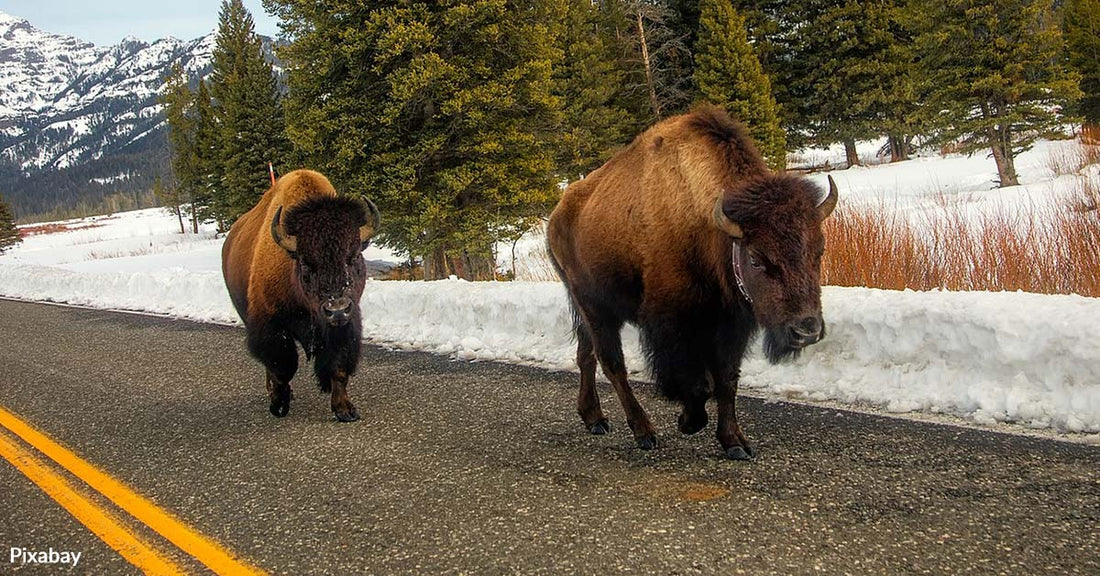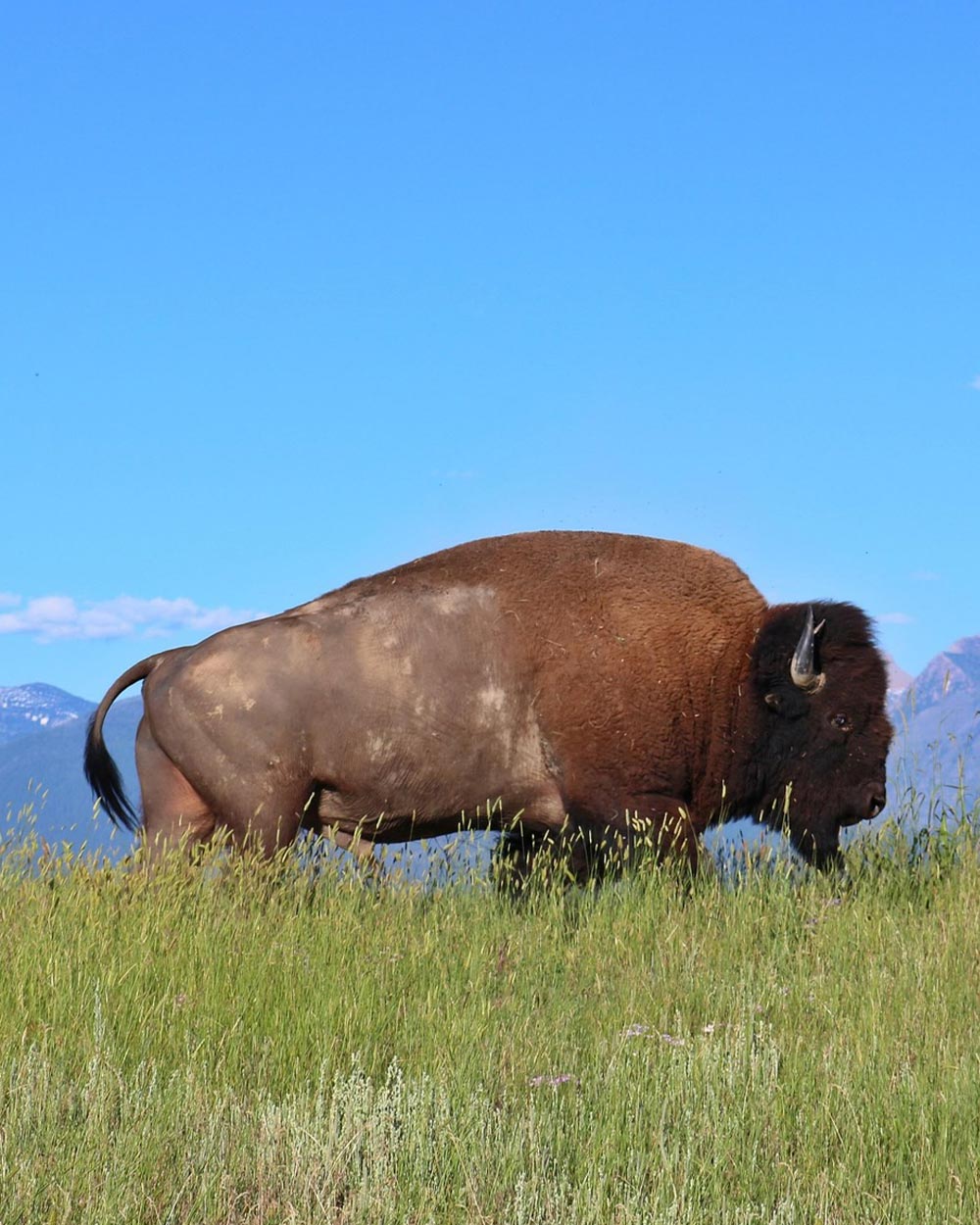Yellowstone National Park Sanctions Hunting of Bison to Cull Diseased Herd
Matthew Russell
Yellowstone National Park has sanctioned the hunting of its bison herd as part of a four-month culling operation to prevent the animals from wandering onto public lands north and west of the park, The New York Times reports. The animals are being hunted because some 60% of the herd is infected with brucellosis, which can be transmitted to cattle and cause them to abort their calves.
The culling has generated criticism, particularly because of the number of pregnant females that have been killed. More than 1,530 bison have been culled so far, Silk-News reports, with around 285 sent to a quarantine site to test for disease. The remainder have been captured and held to protect them from the hunt.
Yellowstone is home to the wildest bison population in the contiguous US, with virtually no fences, and the animals are subject to various natural forces, from weather to grizzlies and wolves. The hunting of the bison is a complicated issue because once they cross an invisible national park boundary into Montana, they become the responsibility of the state, the National Park Service reports, and historic treaties grant members of indigenous tribes the rights to take the buffalo.
 Photo: Pixabay
Photo: PixabayYellowstone National Park allows hunting of its bison herd to prevent the spread of disease.
The Cultural Significance of Yellowstone's Bison Herd
Yellowstone's bison herd is an iconic symbol of the American West. For generations, these massive, shaggy animals have roamed the park's vast landscapes, inspiring awe and admiration in visitors from all over the world. But the bison's importance goes beyond mere aesthetics; for many Native American tribes, these animals are a sacred part of their culture and spiritual beliefs, PBS reports. Bison are also an important symbol of strength, resilience, and freedom, and have been a vital source of food, clothing, and shelter for countless generations of Indigenous peoples.
The hunting of bison has been an integral part of the indigenous culture for thousands of years. It is a spiritual and ceremonial act that is performed with great reverence and respect for the animal. Hunting bison is viewed as a way of connecting with the natural world and honoring the sacred relationship between humans and the environment. The traditional hunting practices involve using every part of the animal and giving thanks for its sacrifice, the LA Times reports. The bison is a deeply respected animal, and the traditional hunting practices reflect this respect.
 Photo: Pixabay
Photo: Pixabay60% of Yellowstone's bison herd is infected with brucellosis.
“It’s a very cultural and spiritual endeavor and brings our families together,” Jeremy Red Star Wolf, of the Confederated Tribes of the Umatilla Indian Reservation, told the New York Times. “And it gives us an opportunity to talk about who we are and where we come from.”
However, the indiscriminate killing of bison that occurs outside of Yellowstone Park is not reflective of these traditional practices. Those bison are largely not being hunted for cultural or spiritual reasons. The killing of bison in these circumstances is often for commercial purposes or to prevent bison from encroaching on private land, reports the Mountain Journal.
 Photo: Pixabay
Photo: PixabayThe culling operation has generated criticism due to the number of pregnant females killed.
Witnesses have reported that the area where the bison are hunted is known as "The Killing Fields" due to the brutality of the hunt. Baby bison are shot grazing next to their mothers, and pregnant cows are killed, leaving their fetuses to rot in the field along with other detritus. The road is clogged with people and cars, and hundreds of gut piles are left in the field for months, endangering other wildlife and humans.
This indiscriminate killing of bison is a threat to the cultural heritage and traditional practices of indigenous tribes, Inside Science reports. It also undermines the conservation efforts of Yellowstone Park and puts the long-term survival of the bison at risk.
 Photo: Pixabay
Photo: PixabayBison are an iconic symbol of the American West and are culturally significant to many Native American tribes.
Threats to Yellowstone's Bison Herd
Despite their cultural significance, Yellowstone's bison herd has faced numerous threats over the years.
In the late 19th and early 20th centuries, bison were hunted to near extinction as part of the government's efforts to eliminate the primary food source of Native American tribes, according to The Environment & Society Portal. By the early 1900s, fewer than 50 bison remained in Yellowstone, and the herd was on the brink of extinction.
Today, bison face a different set of challenges. One of the biggest threats to their survival is the spread of disease. According to USDA data, many of Yellowstone's bison carry brucellosis, a bacterial infection that can cause miscarriages in cattle. To prevent the spread of the disease to nearby ranches, park officials have implemented a controversial policy of culling the bison herd by killing animals that venture outside the park's boundaries, Mongabay reports.
 Photo: Pixabay
Photo: PixabayBison were hunted to near extinction in the late 19th and early 20th centuries.
Brucellosis is currently limited to wildlife in Yellowstone Park, according to the federal Animal and Plant Health Inspection Service.
According to the brucellosis program veterinarian for Montana’s livestock department, Bradley De Groot, there has never been an outbreak of brucellosis infection among the state’s two million cattle that could be traced to Yellowstone bison, The New York Times reports. De Groot credits constant monitoring and interventions for the success of this prevention.
Brucellosis bacteria can spread from animals to people, Healthline reports, primarily through raw dairy products, but transmission can also be airborne.
There is a serious concern that nearby cattle herds may become infected with the highly contagious Brucella abortus bacterium, which localizes in reproductive organs and is passed primarily through fetal tissue after birth.
 Photo: Pixabay
Photo: PixabayYellowstone's bison herd was on the brink of extinction by the early 1900s.
Balancing Disease Management and Wildlife Preservation
Managing the spread of disease in Yellowstone's bison herd is a difficult balancing act. On the one hand, park officials have a responsibility to prevent the spread of brucellosis to nearby ranches and protect the livelihoods of local farmers. On the other hand, the park has a mandate to preserve its wildlife and maintain healthy, sustainable populations of bison and other animals.
To achieve this balance, park officials have implemented a range of measures, including quarantine facilities and efforts to reduce the number of bison that leave the park's boundaries, the National Park Service reports. These efforts have had some success in controlling the spread of disease while also preserving the park's iconic bison herd.
 Photo: Pixabay
Photo: PixabayBrucellosis is a bacterial infection that can cause miscarriages in cattle.
According to Cam Sholly, the park superintendent, the bison population should not be reduced to fewer than 3,500 to ensure genetic diversity. The recent cull was approved because of a light migration out of the park for several years. Sholly told the New York Times that hunting is less invasive than shipping animals to slaughterhouses, which in the past led to entire families being taken out of the population.
“We don’t want to see this many bison taken out of the population in normal years,” Sholly said. “But we have had three years of very light migration out of the park. This is one of the first major migrations out of the park for a considerable amount of time.”
 Photo: Pixabay
Photo: PixabayHelp us save the Yellowstone bison herd from slaughter!
Take Action: Ban Hunting of the Yellowstone Bison Herd
Despite conservation efforts, Yellowstone's bison herd remains at risk. To ensure the long-term survival of these iconic animals, we must take action now. One concrete step we can take is to ask the park and the State of Montana to ban any hunting of the Yellowstone bison herd, now and in the future.
Hunting these animals would not only be cruel and unnecessary, but it would also put the herd at even greater risk of extinction. Help us send a clear message that we value Yellowstone's bison herd and will do everything in our power to protect these majestic creatures for generations to come.
Click below to make a difference.

